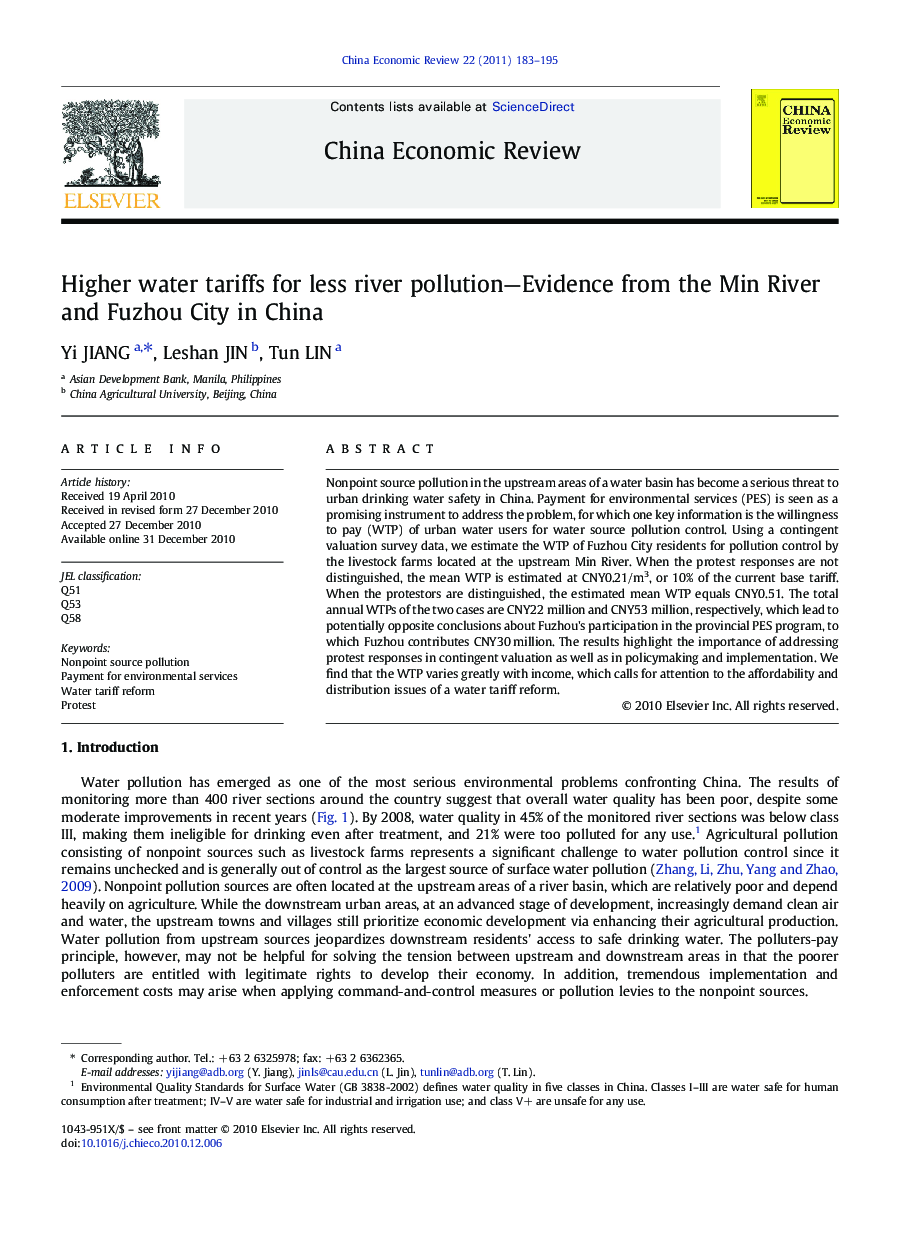| کد مقاله | کد نشریه | سال انتشار | مقاله انگلیسی | نسخه تمام متن |
|---|---|---|---|---|
| 5047709 | 1370915 | 2011 | 13 صفحه PDF | دانلود رایگان |

Nonpoint source pollution in the upstream areas of a water basin has become a serious threat to urban drinking water safety in China. Payment for environmental services (PES) is seen as a promising instrument to address the problem, for which one key information is the willingness to pay (WTP) of urban water users for water source pollution control. Using a contingent valuation survey data, we estimate the WTP of Fuzhou City residents for pollution control by the livestock farms located at the upstream Min River. When the protest responses are not distinguished, the mean WTP is estimated at CNY0.21/m3, or 10% of the current base tariff. When the protestors are distinguished, the estimated mean WTP equals CNY0.51. The total annual WTPs of the two cases are CNY22Â million and CNY53Â million, respectively, which lead to potentially opposite conclusions about Fuzhou's participation in the provincial PES program, to which Fuzhou contributes CNY30Â million. The results highlight the importance of addressing protest responses in contingent valuation as well as in policymaking and implementation. We find that the WTP varies greatly with income, which calls for attention to the affordability and distribution issues of a water tariff reform.
Research Highlights⺠A sample of urban households was surveyed for their willingness to pay (WTP) for clean water source. ⺠The average WTP is estimated at 0.51 CNY/m3, about 25% of the existing base tariff. ⺠Policymakers and researchers need to attend to those protesting for non-economic reasons. ⺠Tariff reform has significant welfare implications as the WTP varies greatly with income.
Journal: China Economic Review - Volume 22, Issue 2, June 2011, Pages 183-195